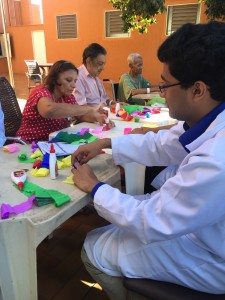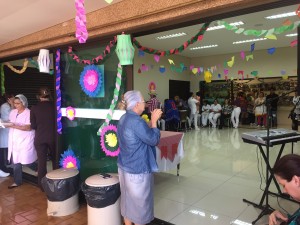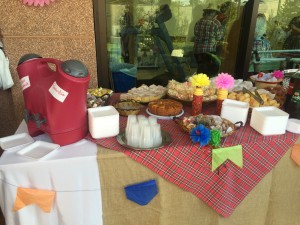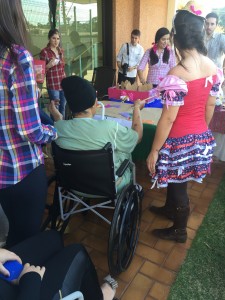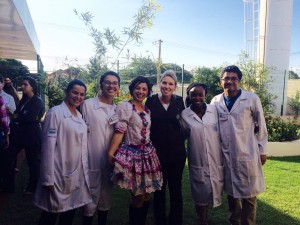Last week we spent the day at palliative care and were integrated into the pain management department. Throughout the morning we went on rounds to visit newly hospitalized patients with Layra, the nurse in charge of pain, and Tamirys, the one and only pharmacist of the whole center. Layra explained that palliative care’s medical staff is concerned with the symptoms of these terminal diseases. Nurses ask about pain, lack of air, nausea, depression and appetite among many others. Even after being deemed in good condition to return home, patients still receive follow-up calls by Layra herself. Tamirys informs caregivers and patients of when and what medications to be taking.
It seems to me that here the focus shifts from the cancer to the person. I then wonder about how the patients and their families perceive this shift. We heard several cases of families becoming frustrated at the care they were receiving, wanting to return their loved one to the battle with the disease, hoping for a cure. Dr. Luis explained that every new patient and their family is given at least an hour-long meeting with the doctors and nurses so they may talk out the situation. During our stay here, we have been exposed to a lot of the education initiatives in both the prevention and palliative departments, but how do you impart this information to a family? By explaining that cancer treatment is being stopped would they think they are being asked to let go? By saying only the symptoms of the disease will be cared for would they feel they needed to give up hope for a cure? And what about the patient? Would they feel like they just have to count their remaining days? These are all difficult questions that could run through people’s heads, to which doctors and the rest of the team offer their best responses. What I believe best captures the response of São Judas Tadeu Hospital is their aim to “not give more days to a patient’s life but give more life to a patient’s days.” This saying is present in so many different parts, pieces and people of this hospital.
Later that afternoon we shadowed Dr. Salete, the doctor in charge of pain on her afternoon visits to hospitalized patients. It was a Monday so all the patients expressed how much they missed Dr. Salete throughout the weekend, and she kindly explained that she would be coming to give them a visit everyday for the next four days, much to their excitement and happiness. Some patients are more active than others and many express an interest in going outside for some sunshine and air or taking an actual shower. Dr. Salete explained that transferring a patient from a bed to a wheelchair is a physically strenuous task, especially since most all the nurses are female. This situation usually results in either many nurses with back problems or patients who have to stay in bed. Dr. Salete also mentioned that there are plenty of machines on the market that perform this task but many are too expensive and complicated to use (I added a picture of one below).
A sling produced by ArjoHuntleigh
All these machines do one hundred percent of the work. I can imagine the cost can be reduced if simple mechanics are used so nurses do not have to bear the whole weight of the patient, but I’m getting ahead of myself! The doctors here are always on the lookout for ways to better these patients’ days and we are here to help start the process of turning ideas into reality. Aside from the medical treatment and attention given to patients and families there is this social and human aspect that is very present here. We attended the annual “Festa Junina” (translation: June Festival) held here at the hospital. All the decorations were actually made by patients and their families. The occupational therapists explained it is a great opportunity for people to take their minds off of serious things and interact with others going through many similar difficulties. We even got to help out a little!
Nikhil focused on his paper accordion
The common area decorated with handmade creations
Festa Junina is a Brazilian tradition to celebrate the saints and the harvest (read more here if you are interested!). The festa was complete with a country styled wedding, a”quadrilha” (square dance) with patients, family members and hospital staff participating, and many delicious snacks (check it out below!). Patients could feel like kids again as they played the classic “pescaria” game where they would fish and win a prize. All these actions and thoughts put together are what make this hospital special, and the best part is that each day is another effort and push to become better at caring for these patients and the people they love.
Nothing quite spreads merriment as much as food
The country wedding
Pescaria (Fishing!)
Us! and one of the dancers in the quadrilha


